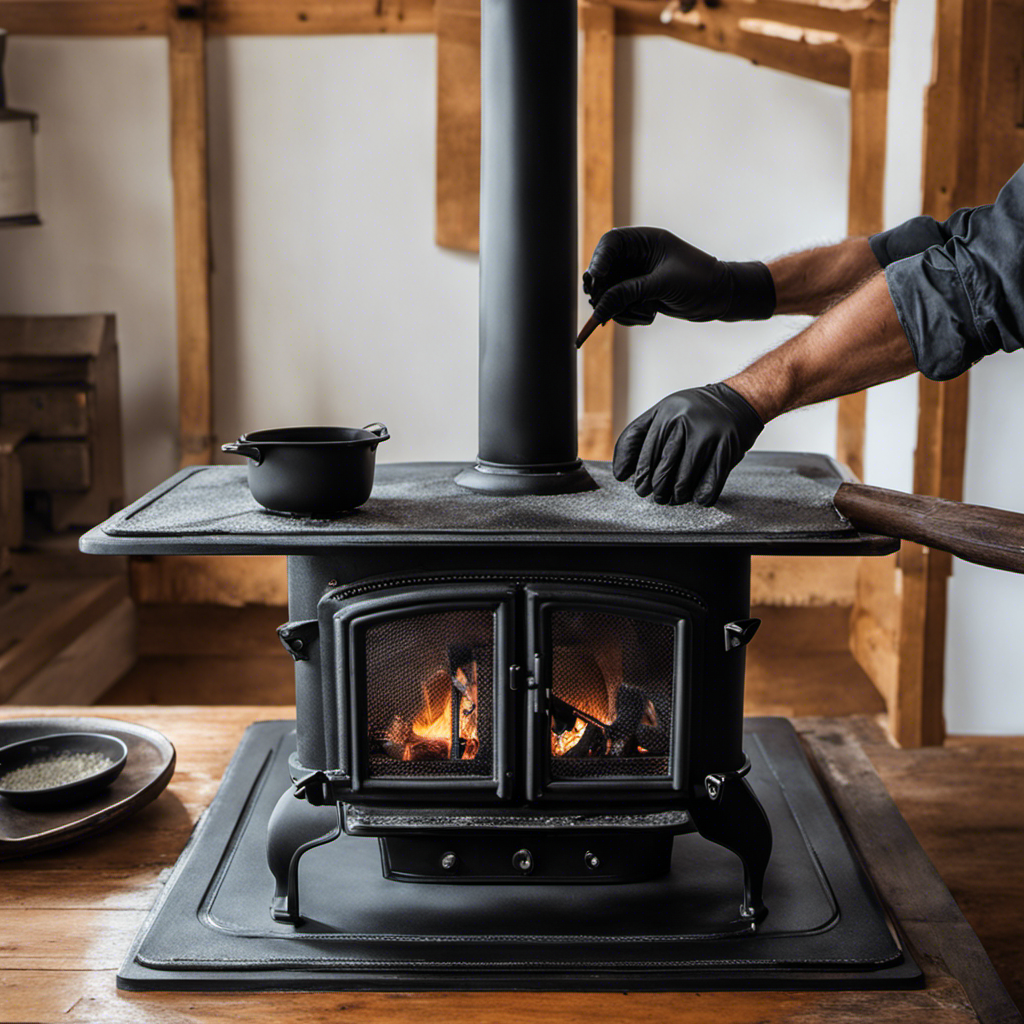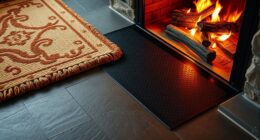As a long-time owner of a wood stove, I understand the significance of selecting the appropriate foundation for its setup. Safety and efficient heating in your household are crucial.
In this article, I will guide you through the best materials to use, tips for selecting the perfect surface, and how to prepare your floor. By the end, you’ll have all the knowledge you need to keep your wood stove secure and your living space cozy.
Key Takeaways
- Ensure at least three feet of clearance around the wood stove.
- Choose fireproof options for surfaces, such as fireproof tiles or bricks.
- Use fire-resistant wallboard as a barrier to prevent heat from reaching combustible materials.
- Use non-combustible materials, like hearth pads or fire-resistant tiles, for floor protection.
Safety Considerations for Wood Stove Surfaces
I need to make sure I’ve at least three feet of clearance around my wood stove to ensure safety.
When it comes to the surfaces around the wood stove, it’s crucial to choose fireproof options. One popular choice is using fireproof tiles or bricks as a hearth. These materials can withstand high temperatures and protect the floor from any potential sparks or embers.

Another option is using a fire-resistant wallboard around the stove area. This wallboard acts as a barrier, preventing heat from reaching combustible materials.
Additionally, heat insulation plays a vital role in wood stove placement. Insulating the walls and ceiling around the stove area helps to maintain a safe temperature inside the room and prevents the risk of fire.
It’s essential to prioritize safety by selecting fireproof materials and ensuring proper heat insulation when setting up a wood stove.
Best Materials for Setting Up Your Wood Stove
Using fireproof tiles or bricks as a hearth and insulating the walls and ceiling are the best materials for setting up your wood stove to ensure safety and prevent fire hazards.
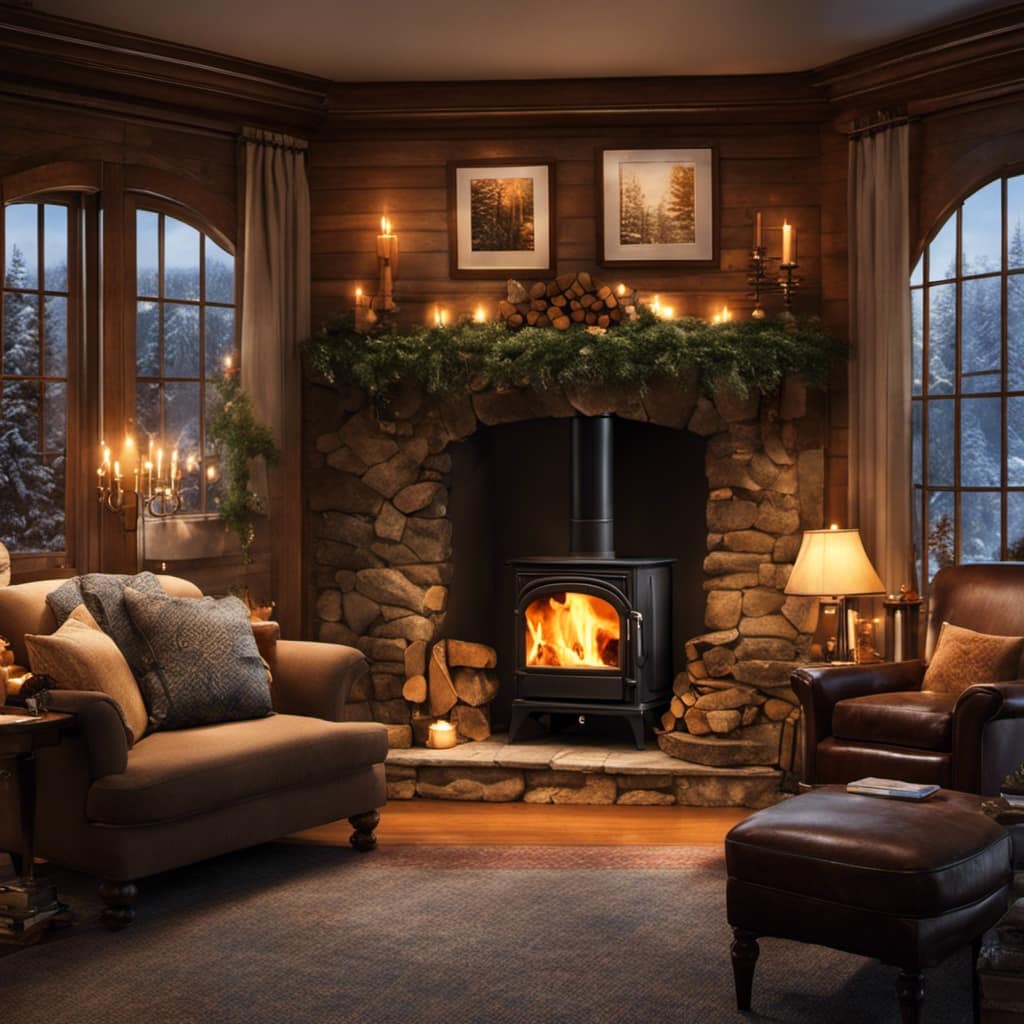
When it comes to fireproof flooring, there are a few options to consider. One option is ceramic tiles, which are highly resistant to heat and can withstand the high temperatures produced by a wood stove. Another option is stone flooring, such as granite or slate, which not only provides excellent heat resistance but also adds a touch of elegance to your space.
Additionally, heat-resistant materials like fireproof plasterboard or cement board can be used to insulate the walls and ceiling, preventing heat from escaping and reducing the risk of fire.
Tips for Choosing the Right Surface for Your Wood Stove
The best surface for your wood stove is a fireproof material, such as ceramic tiles or stone flooring, to ensure safety and prevent fire hazards. When choosing the right surface for your wood stove, it’s important to consider both the heat distribution efficiency and the location of your stove. A well-placed wood stove can effectively heat your entire home, but it needs a suitable surface to maximize its efficiency. To help you make an informed decision, here is a comparison table of different surface materials and their heat distribution capabilities:
| Surface Material | Heat Distribution Efficiency |
|---|---|
| Ceramic Tiles | Excellent |
| Stone Flooring | Good |
| Brick | Fair |
| Concrete | Poor |
| Wood | Very poor |
How to Prepare Your Floor for a Wood Stove
Before installing a wood stove, it’s crucial to properly prepare the floor by ensuring it’s level and stable. This is important for both safety and efficiency reasons. Here are some key points to consider when preparing your floor for a wood stove installation:
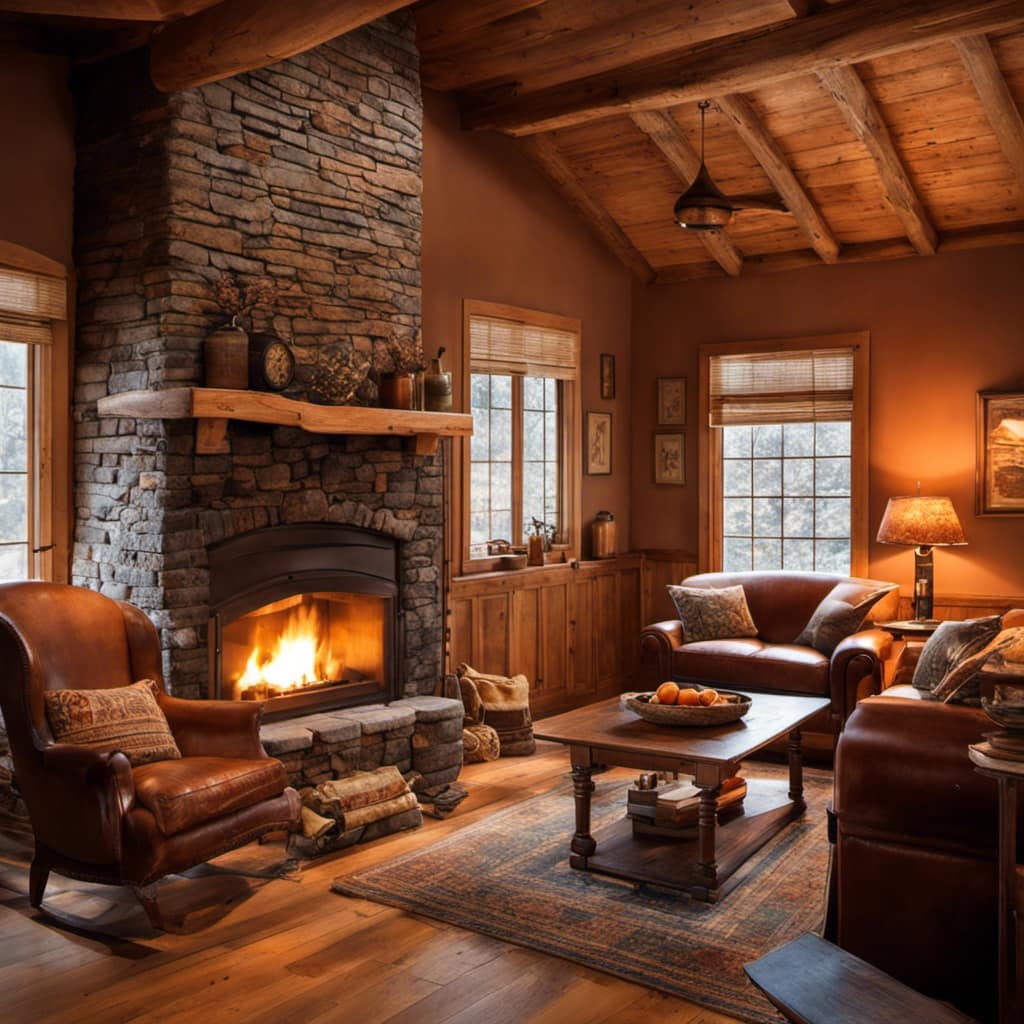
Floor Protection: To protect your floor from heat and potential damage, it’s recommended to use a non-combustible material such as a hearth pad or fire-resistant tiles. These materials can withstand high temperatures and provide a barrier between the stove and the floor.
Leveling: A level floor is essential for a proper installation. Uneven floors can cause the stove to tilt, affecting its performance and potentially causing accidents. If your floor isn’t level, it may be necessary to use leveling compounds to create a flat surface.
Stability: Ensuring the stability of the floor is crucial to prevent any movement or shifting of the stove. This can be achieved by reinforcing the floor joists or using additional support structures if needed.
Installation Requirements: It’s important to follow the manufacturer’s guidelines and local building codes when installing a wood stove. These requirements may include clearance distances from combustible materials, proper ventilation, and specific floor protection specifications.

Are There Certain Temperature Settings That Can Help Maintain a New-Looking Wood Stove?
When it comes to preserving the appearance of your wood stove, following specific temperature settings is crucial. By using the right heat levels, you can prevent unnecessary wear and tear on the stove’s exterior. Consider these wood stove makeover tips to maintain a new-looking appearance for years to come.
Maintenance and Care for Wood Stove Surfaces
Since I’ve been using my wood stove regularly, I’ve found that applying a protective coating like stove polish helps maintain the surfaces and prevent rust. In addition to using stove polish, there are other cleaning techniques that can be used to keep wood stove surfaces in good condition. For example, wiping down the surfaces with a damp cloth after each use can remove any soot or debris. It’s also important to avoid using abrasive cleaners or scrub brushes, as these can scratch the surfaces. When it comes to protecting against heat damage, using a heat-resistant mat or pad underneath the wood stove can help prevent any damage to the floor. Regularly inspecting the stove for any signs of wear or damage is also crucial in maintaining its longevity.
| Cleaning Techniques | Protecting Against Heat Damage | Other Maintenance Tips |
|---|---|---|
| Use stove polish | Use a heat-resistant mat | Inspect for wear |
| Wipe down surfaces | and damage regularly | |
Conclusion
In conclusion, when setting up your wood stove, it’s crucial to prioritize safety by considering the right surface materials and preparing your floor properly.
By choosing a surface that can withstand the heat and weight of the stove, you can ensure a secure and efficient heating system.
Regular maintenance and care of the wood stove surfaces will also prolong its lifespan.
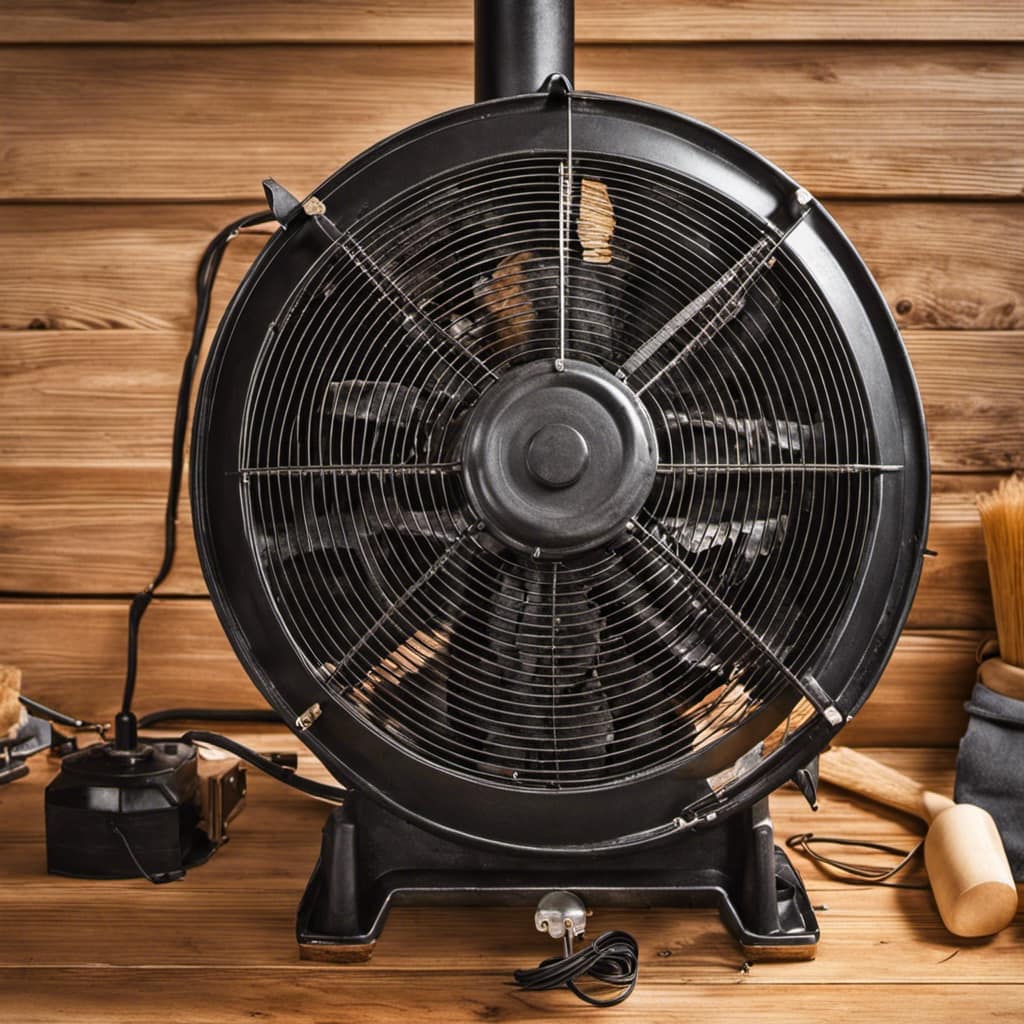
So, take the time to create a cozy and safe environment for your wood stove, coinciding warmth with peace of mind.
Growing up surrounded by the vast beauty of nature, Sierra was always drawn to the call of the wild. While others sought the comfort of the familiar, she ventured out, embracing the unpredictable and finding stories in the heartbeat of nature.
At the epicenter of every remarkable venture lies a dynamic team—a fusion of diverse talents, visions, and passions. The essence of Best Small Wood Stoves is crafted and refined by such a trio: Sierra, Logan, and Terra. Their collective expertise has transformed the platform into a leading authority on small wood stoves, radiating warmth and knowledge in equal measure.





